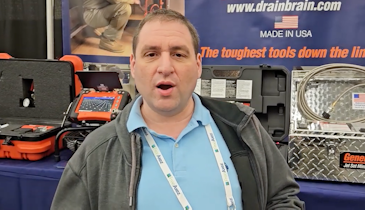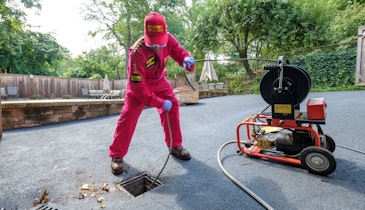“This is the most efficient and economical of all water heater types. Simple to install, works successfully with any plumbing system, and easily gets installed in the same manner as any other gas fixture. It combines instantaneous service with an inexhaustible hot water supply and only uses fuel when the want for hot water arises from opening a hot water faucet. Enclosed is a burner, thermostat inner lining, insulated heat exchanger, a coil of copper through which the water flows and is quickly heated.”
Sound familiar? Do you want to start an argument about tankless versus tank-type water heaters? That’s one of the first advertisements from 1907 for the original Ruud Instantaneous Automatic Water Heater.
That’s right, tank-type water heaters are new, not tankless. The original Ruud water heater was the greatest invention of all time regarding the progression of a modern civilized world.
THE AUTOMATIC CONTROL
The prominent feature of the original Ruud was the automatic control. The automatic control had gas being held back on one side of the valve and a water supply on the other. When a hot water faucet was opened anywhere in the house, the water pressure would drop enough to move the plunger holding the gas back. This, in turn, allows the gas to go to the burner and be ignited by the pilot flame.
The water would then travel around the coiled tubing as the full flame heated it. Closing the hot water spigot would allow the plunger inside the valve to re-establish balance and close the gas off to the main burner.
How is it possible to have that much of a pressure drop? The answer is they had very low pressure. Ruud sold two types of water heaters: standard pressure and low pressure. The cutoff difference between the two was only 25 psi. They also had a table to size the gas orifice based on the water pressure and gas type.
WATER HEATER SIZES
Everyone has seen these old water heaters around supply houses, antique shops and old plumbers’ places as collectibles or on display in showrooms, but only a few know what the numbers mean on the front: No. 3 or No. 8.
The water heaters’ number represented the unit’s gallons per minute. So, the No. 3 unit does 3 gallons per minute. The No. 8 does 8 gpm, and so on. From there, the gallons per minute were for specific residences. For example, a No. 3 putting hot water out at 3 gpm was shown on the sizing chart to be sized for “one bathroom and kitchen sink, small family.”
A No. 8 at 8 gpm is suitable for “a three or four family bathroom, servants’ bathroom, kitchen, pantry, laundry and lavatories.”
Anything more significant, like an apartment building, would be calculated at 2/3.
THE SHEDS
One of the most ingenious things about these water heaters was how they would collect and dispose of the acidic condensation.
Instead of wounding the copper spools with uniform outside larger dimensions, they curved the spools in and out, getting wider in some sports and narrower in others. They then installed water deflectors or sheds to catch the acidic condensation and spiral it down to the collector cup outside the water heater.
INDIRECT FIRE
Ruud also had an indirect fired model, whereas a nearby boiler could be piping in a loop connection at the Ruud tankless so that in colder months when demand for hot water was had, the tankless would ignite as usual.
Still, the thermostat would realize the water was already hot and extinguish the flame. The water heater would automatically light if the water temperature dropped below the setpoint (set from the factory at 140 degrees). You could turn this indirect feature on or off using the “ByPass Valve” on the unit, and because it had the Automatic Control, it would only use enough gas to get the water to temperature.
TANKLESS CIRCULATOR
You thought a circulator for a tankless was relatively new? Nope. That’s old, too. Some of the original Ruud units had a little side piece with its own small pilot flame, which heated up a small water buffer.
When a demand for hot water was had, the water from this “circulator” was drawn first because it was higher, and the main gas valve would still light and heat the cold water as usual. This would give the user a small amount of hot water until the leading hot water arrives, eliminating the cold-water sandwich. This little side piece, known as the “circulator,” tied its vent into the central burner vent.
A CHANGE IN FOCUS
Ruud went on to invest in soda/beer heaters and storage tanks.
The invention of the water heater by Ruud is the most overlooked in history. The genius behind his creations was lost in society for a hundred years. What once was old is new again.
------------
Anthony Pacilla has been in the trades since he was 9 years old (family business). He started cleaning toilets, mopping floors and putting fittings away in the warehouse. As he picked up skills, he would add becoming a ground man and laborer. When he was ready, Pacilla became an apprentice and then a journeyman plumber. He graduated college with a business and economics degree and immediately wanted to come back to work in the family business. A few years ago, Pacilla became a licensed master plumber. To contact Pacilla, email editor@plumbermag.com.






